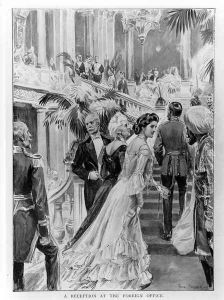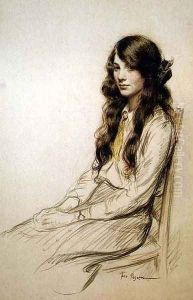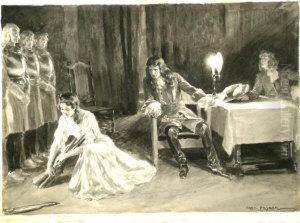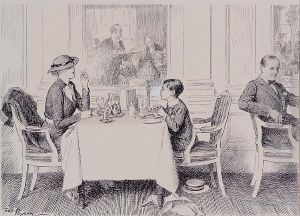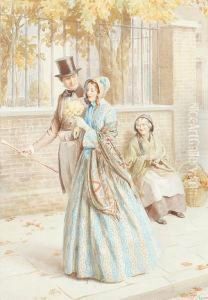Frederick Pegram Paintings
Frederick Pegram was an English artist and illustrator, best known for his work during the late Victorian and Edwardian periods. Born in London in 1870, Pegram was exposed to the world of art at an early age. He was part of a generation of illustrators who contributed to the rich visual culture of the period, which included books, magazines, and newspapers.
Pegram received his artistic education at the Westminster School of Art, where he developed his skills in drawing and illustration. His style was influenced by the prevailing trends of the time, including Art Nouveau and the Arts and Crafts movement. He was a contemporary of other noted illustrators such as Aubrey Beardsley and Arthur Rackham, though he maintained a distinct style characterized by elegance and a clear narrative quality.
Throughout his career, Pegram worked for a variety of publications and his illustrations appeared in numerous books and periodicals. He was particularly adept at pen and ink drawings, which allowed for fine detail and expressive line work. In addition to illustration, Pegram also engaged in painting, though it is his illustrations that he is most remembered for today.
His work includes illustrations for classic literature and texts, such as editions of Jane Austen's novels and Charles Dickens' stories. He also contributed to magazines like 'The Sketch' and 'The Illustrated London News', which were important outlets for his work. His illustrations often captured the social nuances and fashions of his time, reflecting the interests and aesthetics of the Edwardian era.
Frederick Pegram's contributions to art extended beyond his own practice; he was also an educator, teaching at the Goldsmiths' College in London. His influence was felt by a younger generation of artists who would carry on the tradition of British illustration.
Pegram passed away in 1937, leaving behind a legacy of work that offers a window into the visual culture of his time. His illustrations continue to be appreciated for their historical value and their artistic merit, providing insight into the tastes and sensibilities of the late 19th and early 20th centuries.
